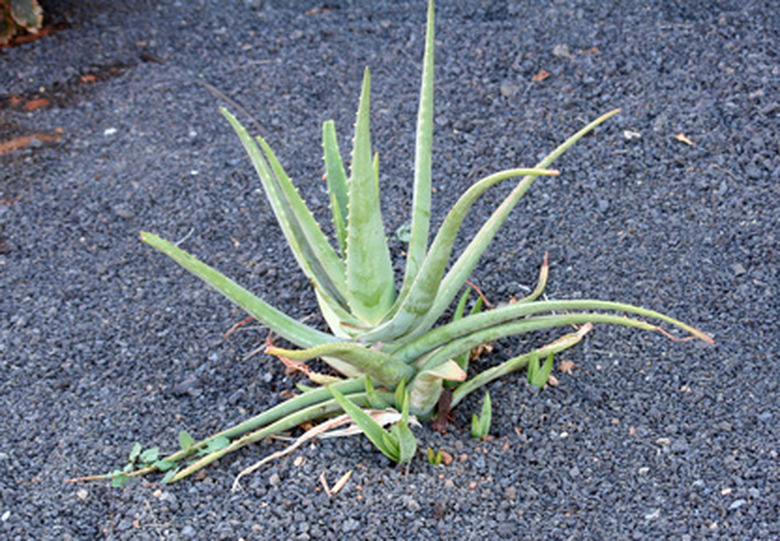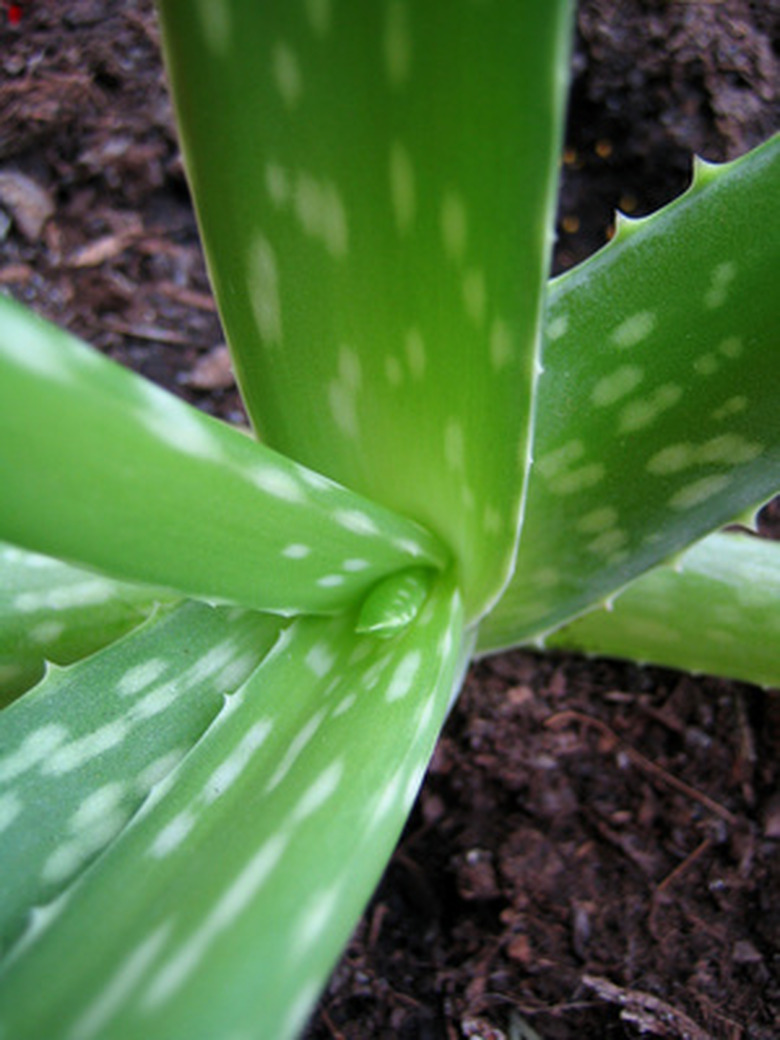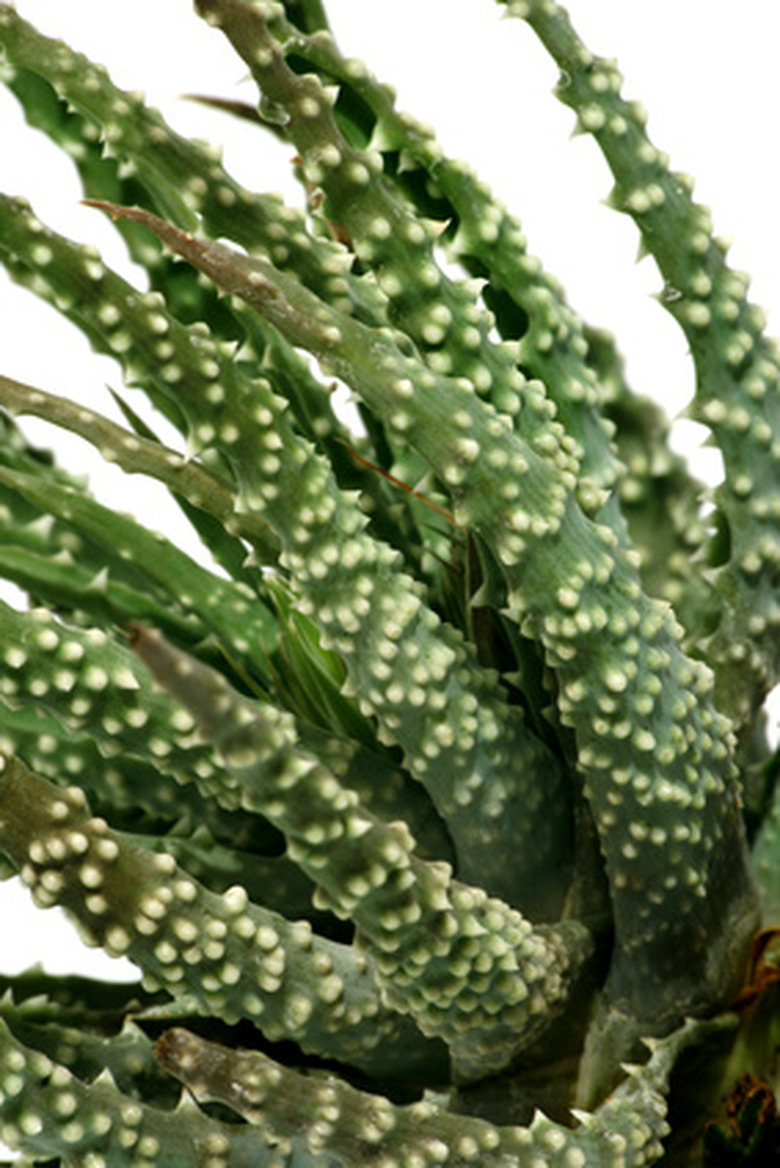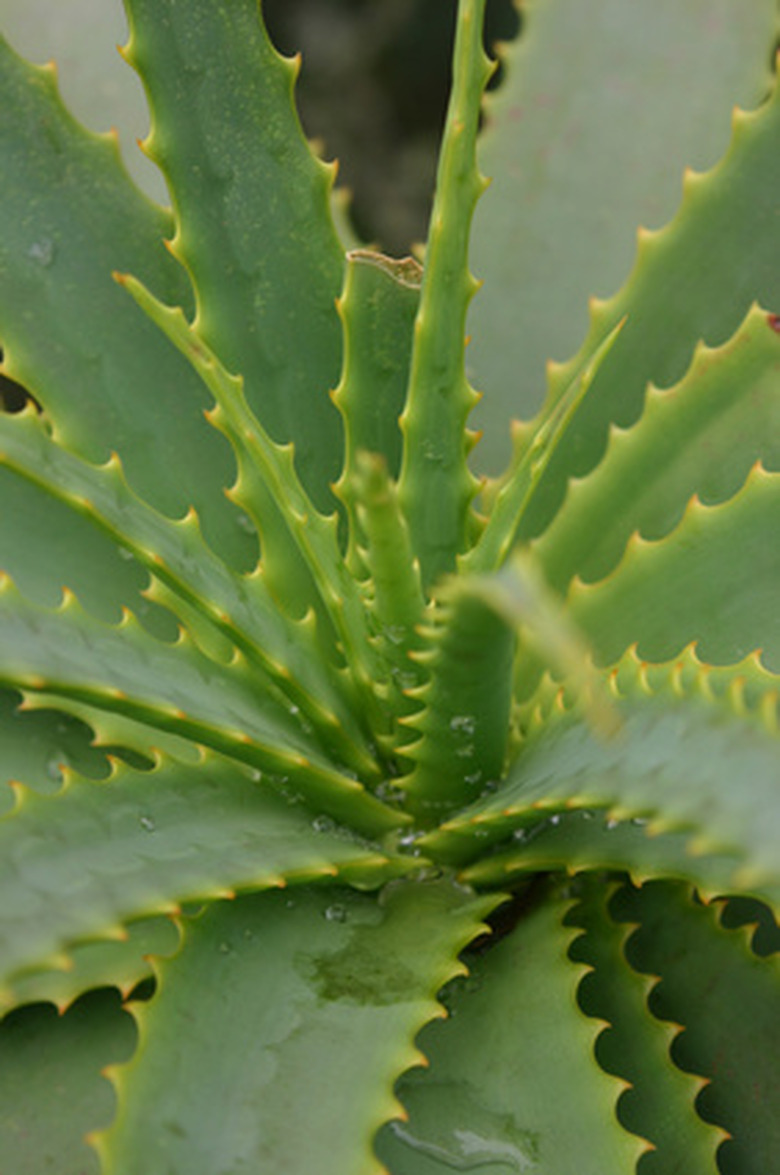Bugs On An Aloe Plant
The aloe vera is a member of the Lily family Liliaceae. Aloes are related to lilies and asparagus; about 250 species exist. The aloe vera is a succulent leafy plant native to the southern and eastern parts of Africa and parts of the Mediterranean. The aloe vera plant can be susceptible to a number of insects under certain conditions.
Characteristics of Aloe Vera
The aloe vera is hardy in United States Department of Agriculture zones 10 to 12. It is an herbaceous perennial also referred to as a leafy succulent. It can grow 1 to 2 feet tall and blooms yellow flowers. It prefers full sun, dry conditions and sandy, well-drained potting soils. The leaves are succulent and grow in a rosette manner. They are known to produce two types of juices. As young leaves they are spotted but turn a green color with maturity.
- The aloe vera is a member of the Lily family Liliaceae.
- The leaves are succulent and grow in a rosette manner.
Uses for Aloe Vera
The aloe vera is most commonly grown indoors as a houseplant. However, aloe vera has been used for thousands of years for its medicinal purposes. The juice in the leaves is harvested by slicing the leaves to remove the medicinal compound called aloin. It is used on the skin to relieve sunburn, itching, minor burns, insect bites, cuts and scratches.
Types of Bugs
The aloe vera is bothered by a number of different insects: the aloe mite, Eriophytes aloinis; the mealy bug, from the family Pseudococcidae; and red spider mites, not considered true insects but rather arachnid, like spiders. Each insect does different types of damage and requires different control management measures, including chemical control to reduce infestations.
Symptoms
Aloe mites are tiny and are spread by blowing in the wind. Aloe mites cause unusual, uncontrolled growth of leaves and flowers. They can also damage the plant and leave galls, or abnormal growths, on some species.
- The aloe vera is most commonly grown indoors as a houseplant.
- Each insect does different types of damage and requires different control management measures, including chemical control to reduce infestations.
Mealy bugs are also very small and very common to succulent plants. The first sign of mealy bugs is white fuzz around the plant base or on the rim of a pot. This fuzz is where the females are building nests. Other symptoms are from the actual feeding of the bug that leaves honeydew on the leaves. Eventually this turns to black mold.
The red spider mite is another very small feeder on the aloe vera. They first produce brown dots on the outermost layers of the leaves. These dots merge into one mass of scarring or webbing on the plant.
- Mealy bugs are also very small and very common to succulent plants.
- The first sign of mealy bugs is white fuzz around the plant base or on the rim of a pot.
Control
The galls from aloe mites are a result of a hormonelike substance secreted to protect the gall. The damage already done cannot be reversed, but it can be kept from progressing with a miticide. In addition, some aloe species that are frost hardy can be exposed to freezing temperatures as another way to kill the mites. The most recommended methods of control include quarantining infected plants, providing good plant hygiene and discarding infected plant materials or whole plants to keep the mites from spreading.
If a mealy bug infestation is small, the bugs can be removed with a pin. Methylated spirit, which consists of industrial alcohol and denatured alcohol, diluted to a ratio of 1:3, can be carefully patted on to kill the bugs. However, this liquid is toxic and highly flammable. It could also cause harm to the outer layer of the plant. If infestation is worse, regular applications of insecticidal sprays can be used. Try to knock off as many bugs as possible with a high power water spray before applying an insecticide such as malathion.
- The galls from aloe mites are a result of a hormonelike substance secreted to protect the gall.
- If a mealy bug infestation is small, the bugs can be removed with a pin.
Biological control is an option with red spider mites. A predator, Phytoseiulus persimilis, is hard to find but can control small infestations. Other control methods include overhead watering and spraying the mites, as they prefer hot dry conditions and the water may dissuade attack. Otherwise, some insecticides can control infestation.



